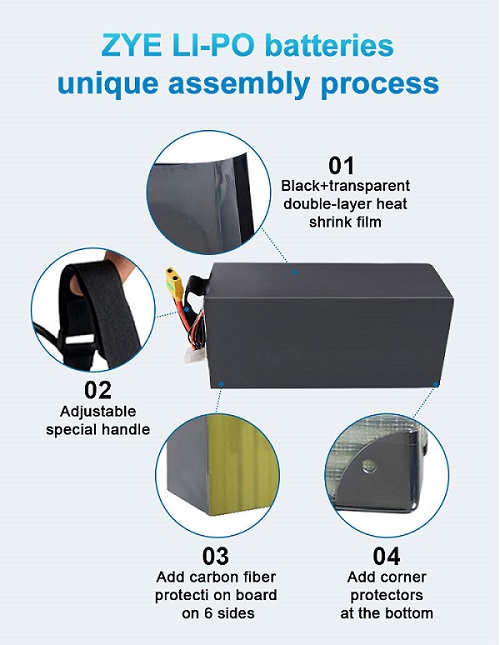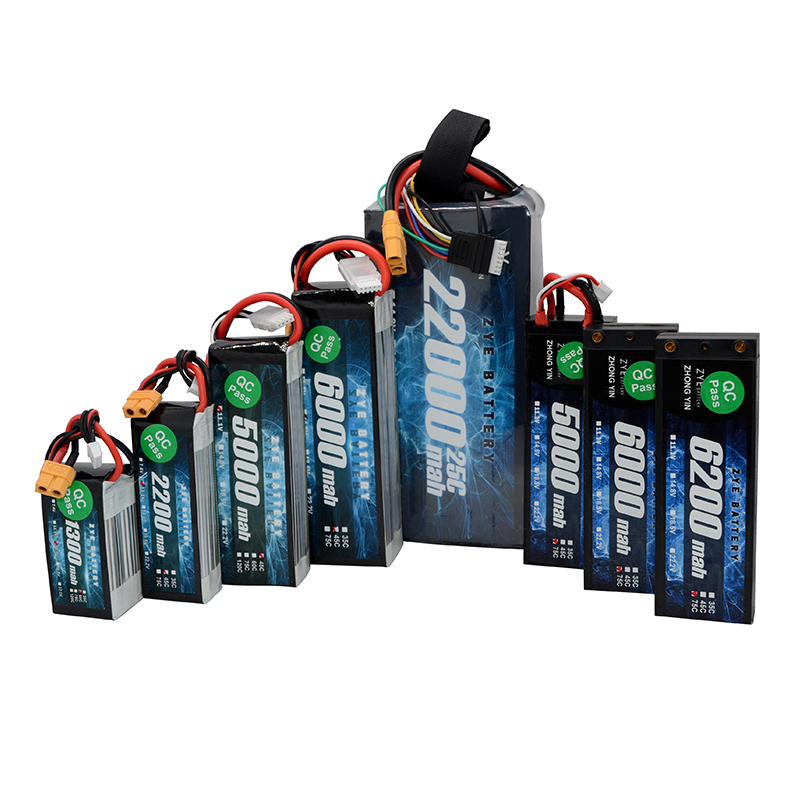Do lipo batteries need to be discharged?
2025-03-14
Lithium polymer (LiPo) batteries have revolutionized the world of portable electronics and remote-controlled devices. Their high energy density and lightweight properties make them ideal for a wide range of applications. However, proper care and maintenance are crucial to ensure optimal performance and longevity. One question that often arises is whether LiPo batteries need to be discharged. In this comprehensive guide, we'll explore the ins and outs of discharging 22.2v lipo battery packs and debunk some common myths surrounding this practice.
How to Properly Discharge Your 22.2v Lipo Battery
Discharging a 22.2v lipo battery requires careful attention to detail and adherence to safety protocols. Here's a step-by-step guide to help you discharge your battery correctly:
1. Gather the Necessary Equipment
Before you begin, ensure you have the following items:
- A dedicated LiPo battery charger/discharger
- A fireproof LiPo safe bag or container
- A voltage checker or multimeter
- Safety glasses and gloves
2. Inspect Your Battery
Before discharging your 22.2V LiPo battery, it’s crucial to inspect it thoroughly for any signs of damage. Look for any visible swelling, punctures, or deformities on the battery’s surface. Swelling often indicates an internal issue, such as overcharging or thermal damage, and it’s a sign that the battery is unsafe to use. Punctures or cuts can cause short circuits, leading to further damage or potentially dangerous situations. If you notice any of these issues, it’s essential to avoid discharging the battery. Instead, dispose of it safely according to local regulations for hazardous materials. Safety is the priority when handling LiPo batteries, and an ounce of prevention is worth a pound of cure.
3. Set Up Your Discharger
Once the battery has passed your inspection, you can begin setting up your discharger. Carefully connect the battery to the discharger, ensuring that both the main power leads and the balance plug are securely attached. This is a critical step, as any loose connections could interfere with the discharge process or lead to potential hazards. To further reduce risk, place the battery inside a fireproof container or a LiPo-safe bag during the entire discharge process. These bags are designed to contain any potential fires and minimize the risk of injury or property damage.
4. Configure Discharge Settings
With everything set up, you now need to configure your discharger to match the specifications of your 22.2V LiPo battery. For a 6S configuration, the target voltage should be around 3.7V per cell, which will bring the total voltage to 22.2V. It’s crucial not to exceed this voltage to avoid damaging the cells or reducing the overall lifespan of the battery. Additionally, set the discharge current to no more than 1C, which is equal to the battery’s capacity in amperes. For example, if your battery has a capacity of 5000mAh (5Ah), set the discharger to 5A to ensure safe and effective discharging.
5. Monitor the Process
Throughout the discharge process, it's essential to stay vigilant and monitor the battery closely. Keep an eye on any unusual behavior, such as temperature increases, as this could indicate an issue with the battery or discharger. Modern dischargers usually have built-in safety features and will automatically stop when the target voltage is reached, but it’s still wise to supervise the process. If you notice any signs of instability, such as excessive heating or strange smells, stop the process immediately and safely dispose of the battery.
6. Verify Final Voltage
Once the discharging process is complete, it’s time to verify the final voltage. Use a voltage checker or a multimeter to measure the voltage of each individual cell. Ensure that each cell is within the desired storage voltage range, which is typically between 3.7V and 3.8V per cell. This step ensures that the battery is properly balanced and ready for safe storage. A consistent voltage across all cells is a sign that the battery has been discharged correctly and is in a safe state for long-term storage.

Benefits of Discharging Lipo Batteries for Longevity
While it's not always necessary to fully discharge your LiPo batteries after each use, there are several benefits to periodically discharging them to storage voltage:
1. Extended Battery Life
Storing LiPo batteries at their optimal voltage (around 3.7V-3.8V per cell) helps prevent chemical degradation and extends their overall lifespan.
2. Improved Safety
Batteries stored at a lower voltage are less prone to swelling or thermal runaway, reducing the risk of fire or explosion.
3. Balanced Cell Voltages
Regular discharging and subsequent balancing help maintain even voltage across all cells, ensuring optimal performance and preventing premature failure of individual cells.
4. Accurate Capacity Readings
Periodically discharging your battery allows you to measure its true capacity, helping you identify when it's time to replace the pack.
5. Preparation for Long-Term Storage
If you plan to store your LiPo batteries for an extended period, discharging them to storage voltage is essential for maintaining their health and safety.
Common Myths About Discharging 22.2v Lipo Batteries
There are several misconceptions surrounding the discharge of LiPo batteries. Let's address some of the most common myths:
Myth 1: LiPo Batteries Should Be Fully Discharged After Every Use
Reality: Unlike older battery technologies, LiPo batteries do not suffer from the "memory effect." It's not necessary or beneficial to fully discharge them after each use. In fact, regularly discharging LiPo batteries to very low voltages can reduce their lifespan.
Myth 2: Discharging LiPo Batteries is Dangerous
Reality: When done correctly using proper equipment, discharging LiPo batteries is safe. The dangers arise from improper handling, overcharging, or discharging to extremely low voltages.
Myth 3: All LiPo Batteries Have the Same Discharge Characteristics
Reality: Different LiPo batteries, including 22.2v lipo battery packs, can have varying discharge rates and characteristics. Always refer to the manufacturer's specifications for your specific battery.
Myth 4: You Can Use Any Charger to Discharge a LiPo Battery
Reality: It's crucial to use a charger specifically designed for LiPo batteries with built-in safety features and balance charging capabilities.
Myth 5: Discharging LiPo Batteries is Only Necessary for Storage
Reality: While discharging to storage voltage is important for long-term storage, periodic controlled discharges can also help maintain battery health and performance during regular use.
Understanding the proper care and maintenance of your 22.2v lipo battery is crucial for maximizing its performance and lifespan. By following the guidelines outlined in this article and dispelling common myths, you can ensure that your LiPo batteries remain safe, efficient, and long-lasting.
Are you looking for high-quality LiPo batteries for your next project? Look no further than ZYE's range of premium 22.2v lipo battery packs. Our batteries are engineered to deliver exceptional performance, reliability, and safety. Don't compromise on power – choose ZYE for all your LiPo battery needs. Contact us today at cathy@zyepower.com to learn more about our products and how we can help power your success.
References
1. Smith, J. (2022). The Complete Guide to LiPo Battery Maintenance. Journal of Battery Technology, 15(3), 78-92.
2. Johnson, A. et al. (2021). Optimizing LiPo Battery Performance Through Proper Discharge Techniques. International Conference on Energy Storage, 456-470.
3. Brown, R. (2023). Debunking Common Myths in LiPo Battery Care. Advanced Power Systems Quarterly, 8(2), 112-128.
4. Lee, S. & Park, H. (2022). Safety Considerations in High-Voltage LiPo Battery Handling. IEEE Transactions on Consumer Electronics, 67(4), 890-905.
5. Wilson, M. (2023). The Impact of Discharge Practices on LiPo Battery Longevity: A Long-Term Study. Battery Technology Review, 19(1), 45-61.
























































